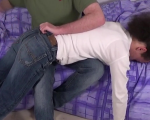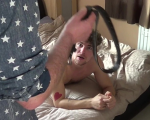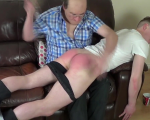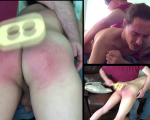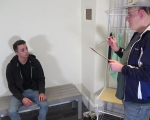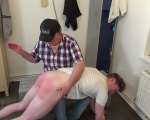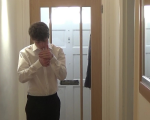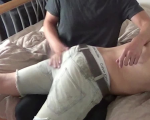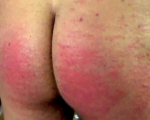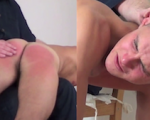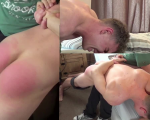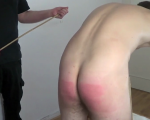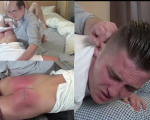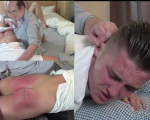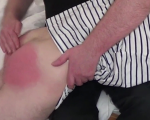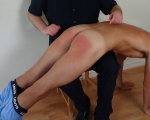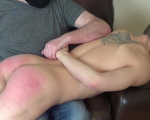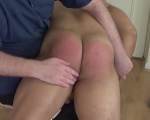29th April 2016 08:16 | LAST COMMENT 504 weeks ago
The word corporal punishment may be strange to the current generation as the action itself. Corporal punishment ( which is derived from latin word meaning body) is the use of physical means or force to inflict pain on an individual. It was often done to correct one's behavior. In the ancient times teachers were very strict and they used to beat children. This was the societal norm.
Corporal Punishment History in British Schools
For a long time physical punishment was part of the disciplinary process in British schools. It was also part of the education process and was fully supported by the government. Despite England and Wales having different forms of education the government set a rule that all forms punishment were to be recorded in a punishment book. In both countries local education authorities (LEA) that had been formed in 1902 set rules to govern these punishments. The number of strokes to be administered was laid down by only two LEAs. Eighteen of them required punishment to be carried out in private while ten required the presence of a witness during the act. Nearly half of the LEAs supported the notion that only female teachers could punish girls. In their quest to achieve equality LEA of Oxfordshire and Inner London, laid down the rule that only men were permitted to cane boys. Some LEAs forbade the caning of girls in the buttocks but permitted they be canned on the hand. For boys they could be canned on the hand or their clothed buttocks. Some LEAs restricted themselves by preventing teachers from hitting pupils other body parts especially the boxing ears or hitting the head. The number of staff allowed to inflict corporal punishment was also restricted. The LEA of Bradford required that punishment should be done immediately after the offence and not postponed the way some schools used to. However the LEA of Shropshire, Witshire and Newcastle allowed for a period of cooling off before administering the punishment.
In the early days of state education Corporal punishment had its disputes. It is recorded that in 1894 a teacher was successfully prosecuted and fined for assault. It was in rare instances that cases of punishment reached the prosecution stage and majority of the verdict was that they were reasonable thus lawful.
It should be noted, coporal punishment was not compulsory to all the schools in the country. By 1970's it is estimated that about 20% had abolished the use of punishment in their schools. It should also be noted that punishment girls schools was very rare.
Up to 1980 no LEA had made an attempt to ban corporal punishment. However by 1973,the Inner London Education Authority had already banned punishment in primary schools. This happened after the Plowden report published in 1967. This report resulted to corporate punishment in schools of the state being considered as a major issue. In 1987,England banned the use of cane in secondary schools funded by the state. However other independent schools continued with corporal punishment until 1998 when it was fully outlawed to all schools.
Forms of corporal Punishment
Caning-
Caning was very prevalent in boys school. Smoking was the most popular caning offence. Other punishments that attracted caning included bullying, insolence, cheating, missing detention and truancy. Typical cane was used in secondary schools was 36 to 40 inches long. It was referred to as the rattan cane. It was mainly used for punishing boys. In administering the punishment the student would be caned vigorously. These would leave tramlines and painful weals on the buttocks of the student which would last for several days. In some instances bruises would also occur. In mixed sex schools, boys were disciplined more vigorously than the girls. Boys were canned on their buttocks. It was prohibited to do that to a female student. Only the hand was supposed to be punished. Doctors had warned about the possible dangers of canning schoolgirls who they said might be suffering pain as a result of menstruation or nervous strain.
Leather Strap (tawse)

This was used in relatively fewer places in England and majorly in Scotland. It was a leather strap which include two or three tails It was used for administering punishment on the boys buttocks. In Scotland and in Newcastle it was administered on the hand to both sexes. Places like Manchester the schools were at liberty to use this form of punishment.
Bend Over-
In this form of discipline a pupil is commanded so as to receive punishment on his posterior. There is major rule as to how it should be done. However the most common method was to have the offender spread across the desk. Another method is to have the students to touch theirs toes with the legs straight and leaving their posterior protruding behind for the teacher to administer punishment. The chair was also used where instead of the offender touching the toes they touch the chair while bending over their back.
The Slipper-
A slipper is a big, heavy gym school. It is a form of punishment that is mainly administered in the form of classmates. boys were the biggest victims. The teacher would hold the slipper by it's heel and apply the sole to the offender. Others preferred using it the other way round. It was a quick affair and the lesson would on as scheduled without further ado.
Pants down punishment-
The offender would have to undress probably in a private room before the punishment was administered. After that he would dress up and go to back to normal school activities.
Spanking-

Karl in the Consequeses of Cheating - Wait Till Yuur Father Gets Home
Spanking was the norm of life in the British School. It involved hitting the posterior of the offender using the hand. It was mainly done to children who were mainly below ten years. This was their main form of discipline. Teachers often sid that it encouraged them to be morally upright.
In conclusion, all corporal punishment was banned from British schools by 1998 and any person found performing the act is punishable by law. However it is only legal if used by parents. However in Scotland passed a legislation that banned parental corporal punishment.







